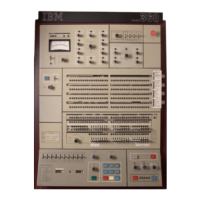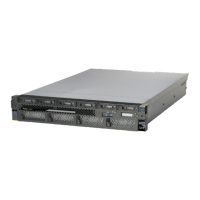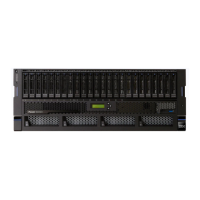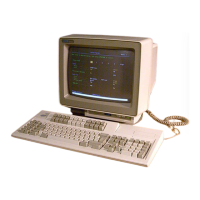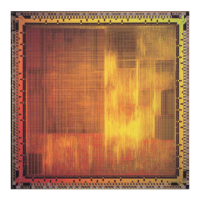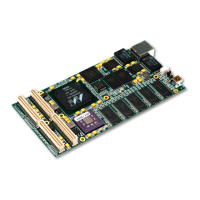Circuit Obiectives
1.
Cycle 1 (energize interposer 0
magnet)
:
Close left-zero
latch
contact.
Energize
punch
clutch
and
read-out
relay ( 326).
Prevent
transfer
of information
in
registers.
Provide a
hold
on
the
information
in
registers.
Provide a special
hold
for register
lA.
Provide a continuous restore to
the
keyboard.
Energize interposer magnet.
Energize
punch-out
relay ( 317).
Drop
key
entry
( 304)
and
field
1,
2,
and
3 relays
( 315, 324, 325).
Energize escape magnet.
Energize escape-interlock relays.
Energize
punch
clutch.
2.
Cycle 2
(punch
a 0
and
energize interposer 0
mag-
net.
Transfer B-registers to next A-registers.
Hold
lA
register until 10° next cycle.
Transfer A-registers
to
B-registers.
Hold
B-registers' information until next cycle.
Energize interposer magnets.
Energize escape magnet.
Energize escape-interlock relays.
Energize
punch
clutch.
3.
Cycle 3, 4, 5, 6
and
7:
These
cycles
are
similar
to
cycle 2.
4.
Cycle 8
(punch
a 7
in
column
16
and
energize inter-
poser
8
magnet)
:
Transfer
B-registers to
next
A-registers.
Hold
register
IA
information
until
10°
next
cycle.
Energize
escape
magnet.
Energize
escape
interlock relays.
Energize
punch
clutch.
Break starwheel 12
or
4 contact.
5.
Cycle
9
(punch
an
8
in
column
17) :
Drop
punch-out
relay
( 317).
Drop
read-out
relay ( 326).
Open
circuit to keyboard-restore magnets.
Left-Zero Credit Field
To
indicate a
credit
field,
the
operator
keys
in
the
information just as
in
a
debit
field.
To
start
the
read-
out,
punch-out
operation,
the
operator
presses
the
dash
(-)
key
instead
of
the
left-zero key. Pressing
the
dash
key causes a
credit
(
11
punch)
in
the
units col-
umn
to
be
punched
above
the
units digit.
1-11
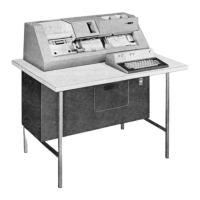
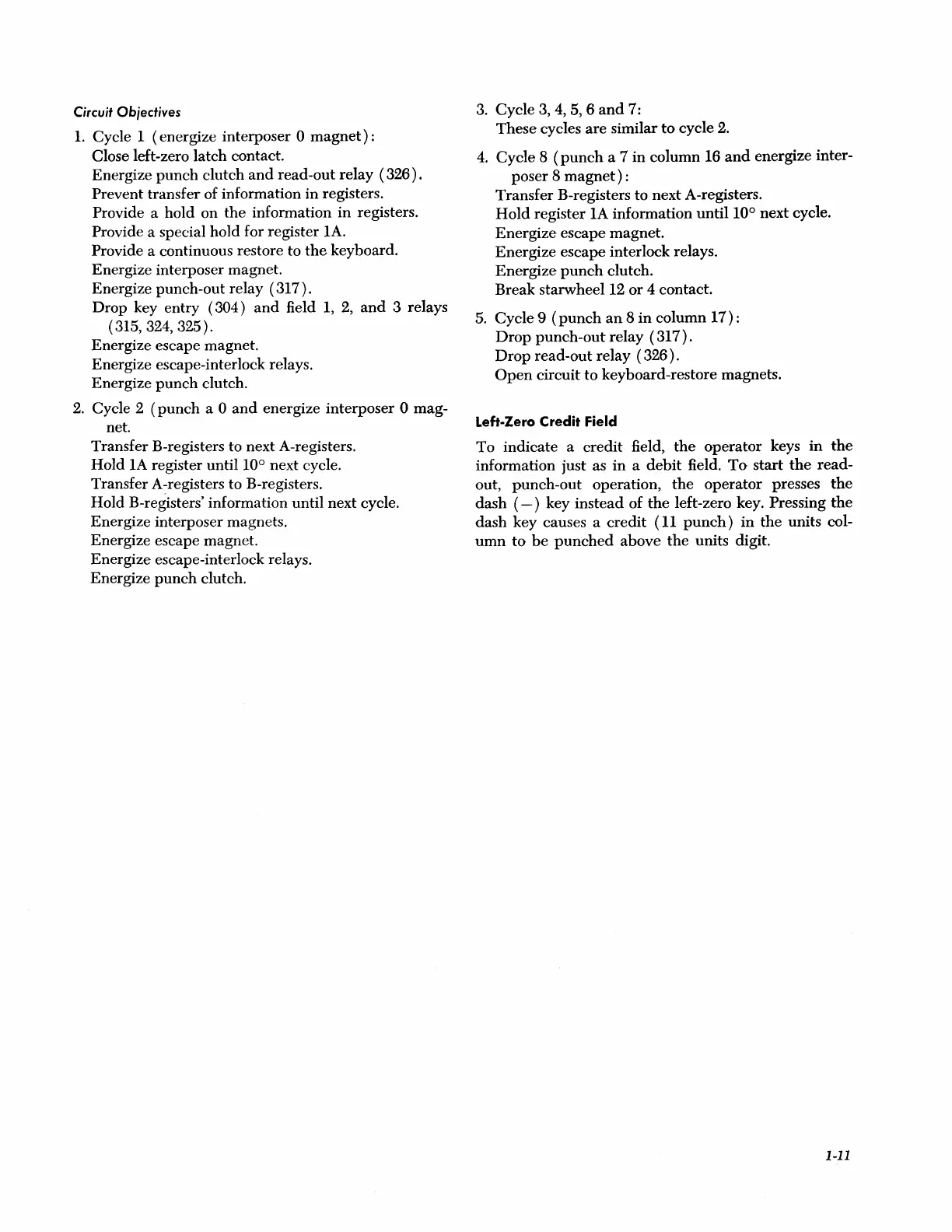